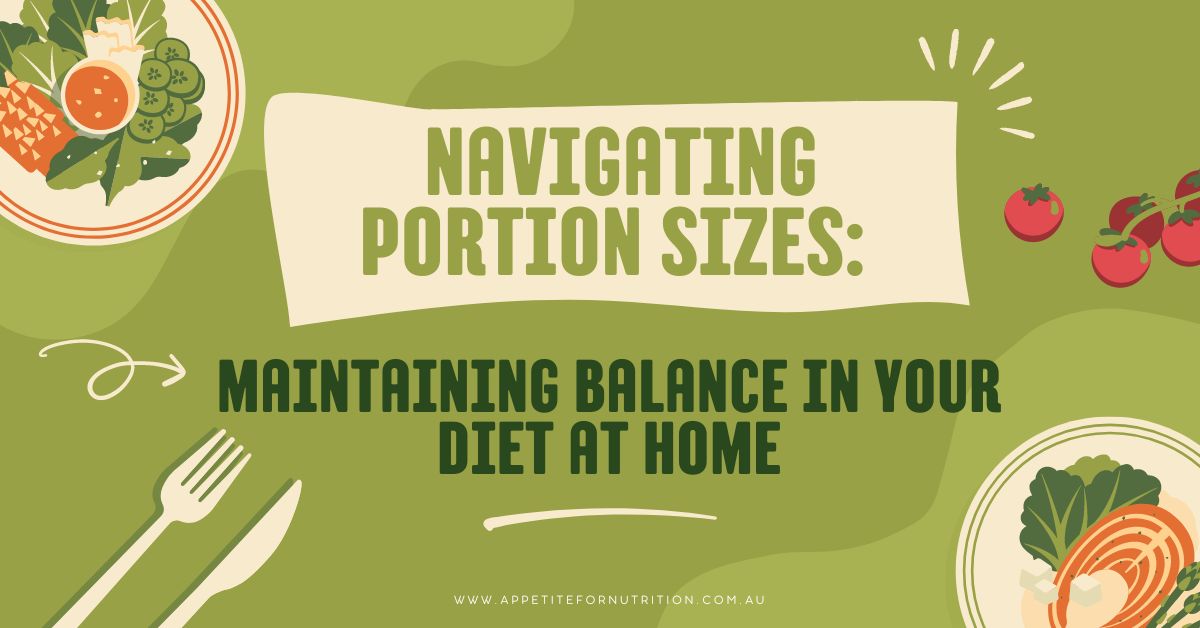
Navigating Portion Sizes: Maintaining Balance in Your Diet at Home
Navigating portion sizes and maintaining a balanced diet while spending more time at home and being less active can be challenging. Understanding recommended portion sizes tailored to your needs is crucial, especially during periods of reduced physical activity. Here are some practical guidelines to help you manage portion sizes effectively:
Understanding Portion Sizes
It’s important to adjust your portion sizes based on your activity level. When you’re less active, you typically need fewer calories to maintain a healthy weight. Here’s a simple guide to help you structure your plate:
Vegetables/Salad Include a variety of:
- Salad, stir-fried, or raw vegetables
- Cooked vegetables
Carbohydrates Choose low GI options that keep you full longer to prevent overeating:
- Pasta/Noodles (1 cup cooked)
- Rice (2/3-1 cup cooked)
- Potato (200g with skin)
- Corn, pumpkin (1 cob/ 1/2 cup kernels/ 1/2 cup cooked pumpkin)
- Wholegrain bread (1-2 slices)
- Legumes or lentils (150g cooked or canned)
Protein Include lean sources to support muscle health and satiety:
- Lean meat (size of your palm, ~120g cooked)
- Fish/Seafood (150g cooked)
- Eggs (1 whole)
- Legumes or lentils (150g cooked or canned)
- Tofu (150g)
- 250mL milk
- 2 slices cheese (40g)
- Yoghurt (3/4 cup)
Balancing Your Plate
Many people unknowingly exceed recommended portions for carbohydrates and protein. Adjust portions based on your daily activity level, keeping in mind that these guidelines provide a general framework. Be mindful of your intake, especially on days when physical activity is limited.
Healthy Eating Guidelines
It’s important to limit foods high in added sugars, salt, and saturated fats such as chips, chocolate, fried foods, pastries, and burgers. These should be enjoyed occasionally rather than as part of your everyday diet to avoid potential health complications.
Additional Resources
For personalized nutrition advice tailored to your age and gender, refer to the Australian Guide to Healthy Eating recommendations: Australian Guide to Healthy Eating
By following these guidelines and resources, you can make informed choices about your diet and maintain a healthy balance of nutrients, even during times when physical activity may be limited. Remember, small changes in portion sizes and food choices can lead to significant improvements in overall health and well-being.
Enjoy your journey towards healthier eating habits!
Looking for a Meal Plan? check out our Tailored Meal Plans



